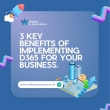Welcome! Data lifecycle management is a policy approach to manage the flow of informational data to its lifecycle. Furthermore, DLM products automate these lifecycle management processes, organising data into separate according to specified policies.
Moreover, they automate data migration from one tier to another based on those criteria. New data and data lifecycle management software that must be accessed more frequently is typically stored on faster and more expensive storage media.
In contrast, less critical data is stored on cheaper, slower media. In addition, DLM ensures the seamless flow of information throughout its lifecycle, with three main goals of data lifecycle management: confidentiality, integrity, and availability, also called the CIA triad. Lastly, DLM optimises data handling, ensuring that your information is always in the right place at the right time.
What is data lifecycle management?

Data lifecycle management (DLM) is a systematic approach to handling data from creation to deletion. Data is categorised into phases based on specific criteria and progresses through these stages as it fulfils various purposes.
Effective DLM organises data and ensures it supports critical business objectives such as security, accessibility, and customer support solutions.
As businesses face increasing risks from data breaches and system failures, robust DLM policies become indispensable. They enable organisations to prepare for and mitigate potential disasters, safeguarding their financial health and reputation.
Businesses can swiftly recover from adverse events and minimise operational disruptions by prioritising data protection and disaster recovery.
Implementing a comprehensive DLM strategy is crucial in today’s data-driven landscape, where data volumes rapidly expand and threats evolve. Proactively managing the data lifecycle enhances operational efficiency and reinforces resilience against unforeseen challenges.
Data lifecycle management vs information lifecycle management

Data lifecycle management (DLM) and information lifecycle management (ILM) are crucial to effective data management strategies. While ILM focuses on managing individual data pieces throughout their lifecycle, DLM oversees file-level data, considering factors like type, size, and age.
1. Data Lifecycle Management
Data lifecycle management (DLM) primarily deals with file-level data, encompassing management based on file characteristics such as type, size, and age. It ensures files are appropriately stored, accessed, and eventually disposed of by organisational policies and regulatory requirements.
Effective DLM can streamline workflows and enhance data security in it services project management, ensuring project data is managed efficiently throughout its lifecycle.
2. Information Lifecycle Management
ILM, sometimes used interchangeably with DLM, uniquely addresses managing individual data elements within files. It focuses on maintaining data accuracy and relevance through timely updates and ensuring compliance with data governance standards.
Phases of data lifecycle management

Data lifecycle management (DLM) encompasses several sequential phases that govern data from creation to disposal. Each phase is guided by specific policies to optimise the data’s utility throughout its lifecycle.
As businesses handle increasing volumes of data, effective DLM strategies are crucial. The phases include data creation, storage, usage, sharing, archival, and eventual disposal. Implementing DLM ensures data remains valuable and secure at every stage.
1. Data Creation
The data journey begins with its creation, sourced from various channels such as web applications, mobile devices, IoT gadgets, surveys, and more. Notably, not all data is essential for business success; new data integration should prioritise quality and relevance.
2. Data Storage
Data comes in different structures, influencing the choice of storage methods. Structured data often fits nicely into relational databases, while unstructured data finds compatibility with NoSQL databases.
Once the storage type is determined, infrastructure security is crucial, involving measures like data encryption and transformation to protect against cyber threats.
However, compliance with regulations such as GDPR is essential to avoid penalties and ensure data privacy. Business intelligence consulting services play a vital role in optimising these processes, offering expertise in data management, analytics, and strategic decision-making based on comprehensive insights derived from diverse data sources.
3. Data Sharing and Usage:
During this phase, data becomes accessible to business users. DLM enables organisations to specify who can access the data and for what purposes.
Once available, data supports various analyses, from fundamental exploratory data analysis to advanced techniques like data mining and machine learning.
These methods aid in critical business decisions and stakeholder communications. Moreover, data isn’t limited to internal use; external parties such as service providers may leverage it for activities like marketing analytics. Internally, data fuels everyday processes like dashboards, presentations, and software implementation.
4. Data Archival
Over time, data becomes less relevant for daily operations but remains crucial for potential legal or investigative needs.
A robust DLM strategy outlines when, where, and how long data should be archived. Data undergoes an archival process to ensure redundancy, allowing restoration to an active production environment when necessary.
5. Data Deletion
In the final stage, obsolete data is securely purged from records to free up storage space. Organisations delete data that exceeds retention periods or no longer serves a purpose. This step ensures data hygiene and compliance with data protection regulations.
Benefits of data lifecycle management

1. Process Improvement
Data lifecycle management (DLM) is pivotal for organisations aiming to optimise their operations.
Addressing the entire journey of data from creation to disposal, DLM ensures data integrity and reliability. This reliability becomes the bedrock for process improvement initiatives within enterprises.
By maintaining high data quality throughout its lifecycle, organisations can confidently embrace strategic initiatives. Reliable data enables informed decision-making, streamlines workflows, and enhances operational efficiency.
A robust DLM strategy not only safeguards data but also ensures that it remains a valuable asset, driving continuous improvement across all facets of the organisation.
2. Controlling Costs
In addition to process enhancement, effective DLM (Data Lifecycle Management) contributes significantly to cost management strategies and overall business growth consultancy. Organisations can venture into cost-effective solutions at each stage of the data lifecycle.
For instance, as data transitions from active to inactive phases, organisations can leverage various methods, such as archiving and data backup, to reduce storage costs. This involves transferring less-critical data to economical storage options like on-premises servers, cloud storage, or network-attached storage (NAS).
By implementing such measures, businesses can optimise their IT spending and ensure compliance with data retention policies and industry regulations.
3. Data Usability
Implementing a Data Lifecycle Management (DLM) strategy allows IT teams to establish clear policies and procedures for consistent metadata tagging. This tagging ensures that all data is easily accessible when needed, improving its usability.
By enforcing governance policies effectively, organisations can retain the value of their data for as long as necessary. Clean and well-tagged data enhances operational agility and efficiency, facilitating smoother company processes.
4. Compliance and Governance:
In every industry, specific rules dictate how long data must be retained, and a robust DLM strategy helps businesses adhere to these regulations. DLM enables organisations to manage data more efficiently and securely while ensuring compliance with privacy laws governing personal and organisational data.
Key stages of data lifecycle management

1. Collection Stage
The initial phase in data lifecycle management is data collection, where businesses accumulate information from both internal and external sources.
This stage may also be called data creation, acquisition, or entry, depending on the method of populating the database—whether through manual input or automated processes.
At Segment, we advocate prioritising the collection of first-party data derived directly from customer interactions such as on-site behaviours, app usage, and survey responses.
First-party data boasts higher accuracy than third-party purchased data, fosters trust with customers, and ensures compliance with privacy regulations like GDPR and CCPA, thus safeguarding future marketing and advertising strategies.
2. Storage Stage
Following data collection, the next critical step is storage. A common pitfall for businesses is dispersing data across disparate teams and data lifecycle management tools, resulting in fragmented insights into customer behaviour and overall business performance.
A practical data lifecycle management framework addresses this challenge by establishing a centralised repository and creating a unified source of truth within the organisation.
The nature of the data collected determines the appropriate storage solution; structured data, akin to information suitable for Excel sheets, should reside in relational databases or data warehouses.
3. Processing Stage
Once stored, data must undergo processing to become actionable. Data processing encompasses encryption, wrangling, and compression. Encryption involves converting human-readable data into a format decipherable only by authorised personnel, ensuring data security.
Data wrangling focuses on cleaning and transforming raw data into a structured and accessible format. Meanwhile, data compression reduces data size through restructuring or encoding, facilitating efficient storage and retrieval.
4. Analysis Stage
Data analysis involves examining processed or raw data to uncover trends and patterns. Machine learning, statistical model, and artificial intelligence are employed here.
This pivotal stage provides valuable insights into business operations and customer behaviour. For instance, it helps identify weak points in sales funnels or potential customer churn risks.
5. Deployment Stage
Also known as dissemination, the deployment stage focuses on validating, sharing, and utilising data. However, the data validation ensures the accuracy and integrity of the data structure.
Sharing involves communicating insights to stakeholders through reports, graphs, dashboards, and other visualisations.
Data usage consists of leveraging insights to drive strategic decisions and business growth. Data lifecycle management aims to democratise data, enabling various teams like marketing and product management to use insights effectively in their day-to-day operations.
6. Archiving Stage
Archiving entails moving data from active deployment environments to long-term storage. While no longer operationally critical, archived data is a resource for future reference or analysis.
However, it also poses security risks if not managed properly. Utilising secure archiving tools helps mitigate these risks by prioritising data privacy and preventing unauthorised access.
Conclusion
In conclusion, effective data lifecycle management (DLM) is not merely a best practice but a critical necessity in today’s data-driven landscape.
By systematically managing data from creation to deletion, organisations ensure compliance with regulations, enhance operational efficiency and mitigate risks associated with data breaches.
Moreover, DLM facilitates strategic decision-making by providing reliable, accessible data throughout its data management lifecycle. This approach optimises resource allocation, reduces costs, and supports business continuity and resilience.
Implementing a robust DLM strategy involves defining clear policies for data handling at each stage—collection, storage, processing, analysis, deployment, and archiving.























